5 Drills to Work the Posterior Chain
The goal of soccer training is improved performance, injury prevention, soccer skills and tactics. Improved performance should never come at the cost of an injured player. Goal #1 is injury prevention in a soccer conditioning program. Goal #2 is to improve performance.
In this
article I will primarily focus on building the posterior chain.
The primary thrust is training the behind the body muscles without using
weight. It is an important article and topic to consider please
consider these exercises if you are looking for ways to train on the
field.
What is the posterior chain?
The posterior chain for the purpose of this article includes the glutes (butt) and hamstrings (hamstrings).
Why the posterior chain?
At top speeds the motion of the legs is almost like clawing back into the ground. It is not a pushing motion at top speed. This clawing motion happens primarily through use of the posterior chain.
Which muscle is the prime mover in the posterior chain?
The Gluteus maximus. I have talked about how the glutes can, in essence, become deactivated in other articles. When this happens the hamstrings take over. To keep it simple; this is bad. From a sprinter and soccer players standpoint, it appears to me that keeping the glutes turned on is vital from a performance and injury prevention standpoint.
How a strong posterior chain helps?
To be fast you want to be powerful. A key aspect in the equation for power is strength. From a logical and mathematical standpoint if we improve strength, power will also improve. The equation for power is Power=Force x Velocity.
What are some good exercises to build a strong posterior chain?
As a coach or player I am sure you are looking for ways to build the posterior chain while training on the field. The great thing about bodyweight training is it provides an avenue for strength training while at the field. All the bridging movements are basically the same. Try to push the midsection of the body up by pushing the foot/feet into the ground. The top point of the drill is when you have formed a straight line from the shoulders, to the knees.
See the drills below to work certain aspects of the posterior chain.
| Exercise Image | Explanation |
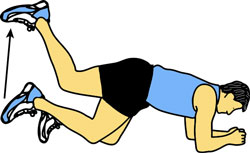 |
Lets call this an activation exercise. It can still be pretty hard. When you lift your hind leg hold it at the top position for about 3-5 seconds while squeezing your glute muscle. Then return to the start position. Repeat. Do not compensate by bending or twisting your back. Do the drill slow and steady. |
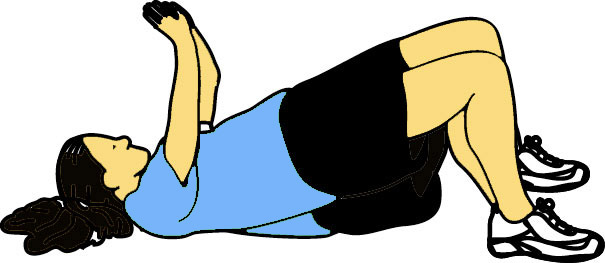 |
This is an easy exercise. I dare say this is the easiest of all the exercises listed here. I think for most athletes this will be too easy. I still recommend you start here to see where you are at. With all bridging exercises try to push yourself up with your leg/s. Try not to lift your midsection with the core. Do the drill slow and steady. |
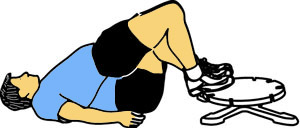 |
Elevate your feet on something unstable like the object shown or a couple soccer balls. With all bridging exercises try to push yourself up with your leg/s. Try not to lift your midsection with the core. Do the drill slow and steady. |
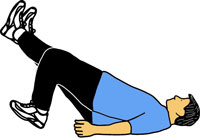 |
Do this drill by pushing through the heel. With all bridging exercises try to push yourself up with your leg/s. Try not to lift your midsection with the core. Do the drill slow and steady. |
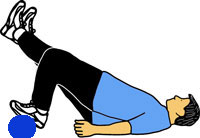 |
The ball under the foot provides instability and makes the SL bridge more difficult. With all bridging exercises try to push yourself up with your leg/s. Try not to lift your midsection with the core. Do the drill slow and steady. |
A suggestion: Don't start with the instability exercises. A natural progression from stability is going to instability. If you really want to get tough with the bridging exercises put some weight around your core and lift that. For example, you can hold a 45 pound plate around the waist. Once technique breaks down the set is over. Do not bend on that rule. All bridging exercises should be done by pushing through the heel, not the front of the foot. |
|
